
Gelderland, also known as Guelders in English, is a province of the Netherlands, occupying the centre-east of the country. With a total area of 5,136 km2 (1,983 sq mi) of which 173 km2 (67 sq mi) is water, it is the largest province of the Netherlands by land area, and second by total area. Gelderland shares borders with six other provinces and the German state of North Rhine-Westphalia.

The Duchy of Guelders is a historical duchy, previously county, of the Holy Roman Empire, located in the Low Countries.
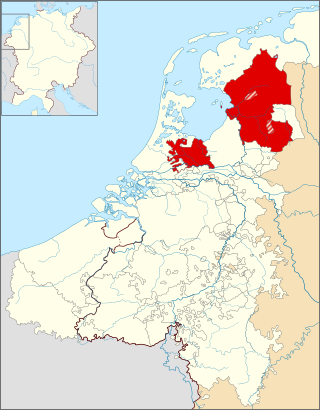
The Bishopric of Utrecht was an ecclesiastical principality of the Holy Roman Empire in the Low Countries, in the present-day Netherlands. From 1024 to 1528, as one of the prince-bishoprics of the Holy Roman Empire, it was ruled by the bishops of Utrecht.

The County of Waldeck was a state of the Holy Roman Empire and its successors from the late 12th century until 1929. In 1349 the county gained Imperial immediacy and in 1712 was raised to the rank of principality. After the dissolution of the Holy Roman Empire in 1806 it was a constituent state of its successors: the Confederation of the Rhine, the German Confederation, the North German Confederation, and the German Empire. After the abolition of the monarchy in 1918, the renamed Free State of Waldeck-Pyrmont became a component of the Weimar Republic until divided between Hannover and other Prussian provinces in 1929. It comprised territories in present-day Hesse and Lower Saxony (Germany).

Philip de Montmorency, also known as Count of Horn, Horne, Hoorne or Hoorn, was a victim of the Inquisition in the Spanish Netherlands.

The House of Egmond or Egmont is named after the Dutch town of Egmond, province of North Holland, and played an important role in the Netherlands during the Middle Ages and the Early modern period. The main lines Egmond-Geldern, Egmond-Gavere and Egmond-Buren-Leerdam had high noble, princely rank.
"Ons Gelderland" is the anthem of the province of Gelderland in the Netherlands.
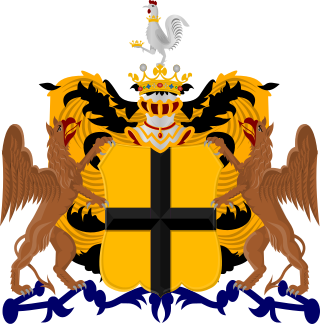
The House of Bylandt is the name of an ancient house of nobility originating in the Lower Rhine region. It later split into the cadet branches of Bylandt-Well, Bylandt-Rheydt and Bylandt-Halt-Spaldorf.
Maria Von Nassau-Dillenburg, Countess of Nassau, Katzenelnbogen, Vianden and Dietz, was a Dutch noblewoman.
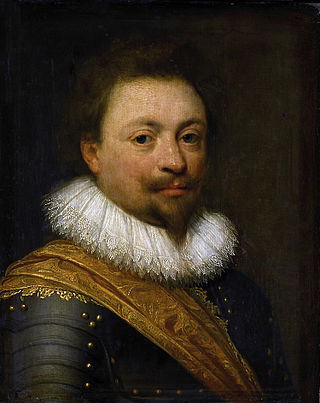
William, Count of Nassau-Siegen, German: Wilhelm Graf von Nassau-Siegen, official titles: Graf zu Nassau, Katzenelnbogen, Vianden und Diez, Herr zu Beilstein, was Count of Nassau-Siegen, a part of the County of Nassau from 1624 to 1642. A member of the House of Nassau-Siegen, a cadet branch of the Ottonian Line of the House of Nassau, he was a professional soldier who served in the armies of the Hanseatic League and the Republic of Venice, then with the Dutch States Army during the Eighty Years War. Promoted field marshal in 1633, he was successively governor of Emmerich, Heusden and Sluis.
Count Philip IV of Waldeck was Count of Waldeck-Wildungen from 1513 to 1574. In 1526, he and his uncle Philip III of Waldeck-Eisenberg led the Lutheran Reformation in the county of Waldeck.

Count Philip VII of Waldeck-Wildungen, German: Philip VII. Graf von Waldeck-Wildungen, official titles: Graf zu Waldeck und Pyrmont, Herr zu Tonna, was since 1638 Count of Waldeck-Wildungen.
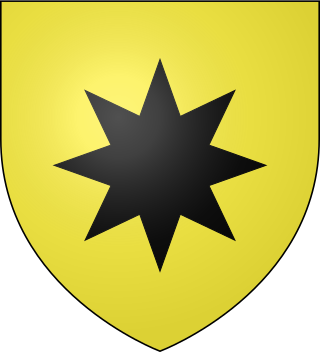
Count Wolrad IV 'the Pious' of Waldeck-Eisenberg, German: Wolrad IV. 'der Fromme' Graf von Waldeck-Eisenberg, official titles: Graf zu Waldeck und Pyrmont, was since 1588 Count of Waldeck-Eisenberg. He founded of the new line of Waldeck-Eisenberg.

Philip Dietrich, was the ruling Count of Waldeck-Eisenberg from 1640 until his death.

Countess Joanne of Nassau-Siegen, German: Joanne Gräfin von Nassau-Siegen, official titles: Gräfin zu Nassau, Vianden und Diez, Frau zu Breda, was a countess from the House of Nassau-Siegen, a cadet branch of the Ottonian Line of the House of Nassau, and through marriage Countess of Waldeck.
The historic Diocese of Utrecht was a diocese of the Latin Church of the Catholic Church from 695 to 1580, and from 1559 archdiocese in the Low Countries before and during the Protestant Reformation.
Schielands Hoge Zeedijk, formerly called Hoogendijk is a Dutch dike in the province of South Holland that stretches from the Schie at Schiedam to the Gouwe near Gouda. Constructed in the 13th century, the dike continues to protect an area inhabited by 3 million people from flooding by the North Sea.

Wolfert II van Borselen was lord of Veere and Zandenburg.
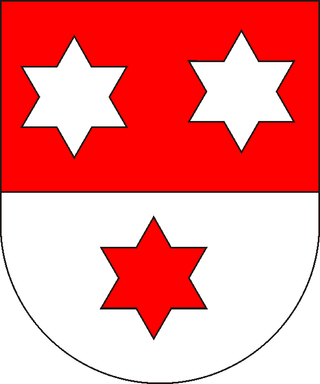
Countess Christiane of Erbach, German: Christiane Gräfin zu Erbach, was a countess from the House of Erbach and through marriage Countess of Nassau-Siegen.

Sint-Maartensdijk Castle was a castle with a rich history. Except for a part of the moats nothing remains of it.















